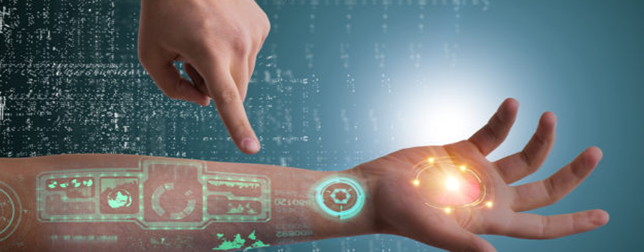Emerging science and technology will change consumer healthcare as we know it within the next 30 years. This is according to Consumer Health Futures, a report by The Future Laboratory in collaboration with international consumer healthcare company, RB.
Against a backdrop of rapid environmental, socioeconomic and demographic change, the need for innovation within the consumer healthcare space is acute. With input from a panel of world-leading healthcare experts, the report analyses the trends and attitudinal shifts impacting the health and well-being of global consumers at every stage of their lives. Through this, it exposes the innovation requirement in consumer healthcare – and predicts how this will be met to empower everyone to take health into their own hands.
Technology delivering healthier lives
As consumer acceptance and expectations of technology grow, it will play an increasing role in consumer healthcare, delivering more accurate diagnoses and effective, personalised solutions with unprecedented speed.
Dr Bertalan Meskó, director of The Medical Futurist Institute, interviewed for the report, describes how wearables will gain in sophistication: “Ingestible and digestible sensors stand to provide access to real-time, high-fidelity data on individuals, helping anyone understand their health. Even more importantly, this understanding has been shown to fuel behavioural change.”
- Wearables will move beyond monitoring devices to analyse wearers’ sweat for different biomarkers and signs of ill-health. Soon these will be able to ascribe barcodes to macroparticles including bacteria, viruses and pollutants, notifying the wearer of their presence and their own vulnerability to infection.
- 3D printing will further advance levels of personalisation, which will enable individuals to access hyper-personalised drugs at their local pharmacy, uniquely tailored in shape and quantity to their body.
- Nanotechnology will revolutionise pain management. Soon tiny amounts of over-the-counter pain medication could be inserted into nanoparticles, before being injected into patients own immune cells, able to transport it through the body to the site of inflammatory pain.
Maneesh Juneja, digital health futurist comments: “As urbanisation takes hold, people are increasingly living more sedentary and stressful lives – both factors highly associated with chronic pain. Over the next two decades, healthcare innovators will turn to digital technologies to meet the escalating demand for fast, effective pain relief. We’re already seeing phenomenal advances in the field of bioelectronics and fully anticipate a future where miniaturised implantable devices will be injected into the body, reading and correcting electrical signals as they pass along the nervous system.”
Microbiome research supporting healthier starts
As the number of children delivered by Caesarean section grows, greater focus will be placed on mitigating the negative impact on the infant’s microbiome[1].
Marie-Claire Arrieta, microbiome scientist and assistant professor at the University of Calgary explains: “Babies born via C-section have a higher risk of asthma due to the impact on the microbiome, with babies born this way exposed to different bacteria than those born naturally, which can affect gut health throughout life.”
- Products that replicate the benefits of vaginal birth without draw-backs will be a key area of development, potentially taking the form of a gauze containing vaginal flora that can be swabbed over the face and body of the baby post-birth.
- Microbiome research will also be harnessed to create next generation probiotics. These could one day be prescribed post-birth to provide infants with specific combinations of microbes able to prevent conditions, such as asthma or obesity, in later life.
Meeting the challenge of an aging population
As healthy aging emerges as a priority for societies globally, a wealth of healthcare innovations designed for older consumers will materialise.
- Juneja predicts that, “In-home listening devices will be used to detect early signs of Alzheimer’s and Parkinson’s” Meanwhile optical sensors embedded in bathroom mirrors will monitor for changes in skin colour indicative of poor cardiovascular health. If detected, these will inform the individual’s wearable device, which will then initiate additional monitoring and alert the wearer.
- Digital technologies will also become increasingly important in defeating later-life loneliness, shown to be as detrimental to mortality as obesity or cigarette smoking.[2] Robotic technology, already instrumental in keeping older consumers active, will be combined with virtual and augmented reality concepts to enable them to interact with friends, family and robotic companions in a virtual setting – removing geography and mobility as barriers to maintaining social connections.
Dave Evendon-Challis, VP Innovation at RB comments: “What this report makes abundantly clear is that evolving consumer needs and technological advancements are driving change in consumer healthcare. Over the next three decades we’ll see a decisive shift in focus from macro health provision to personalised, data-driven healthcare products and services. To drive this shift we must evolve our approach to innovation and explode disciplinary and organisational siloes to deliver collaboration in the healthcare market.
“This report is our call to arms for academics, entrepreneurs, subject matter experts and innovators to partner with us to improve the health and wellbeing of consumers at every stage of their lives.”





